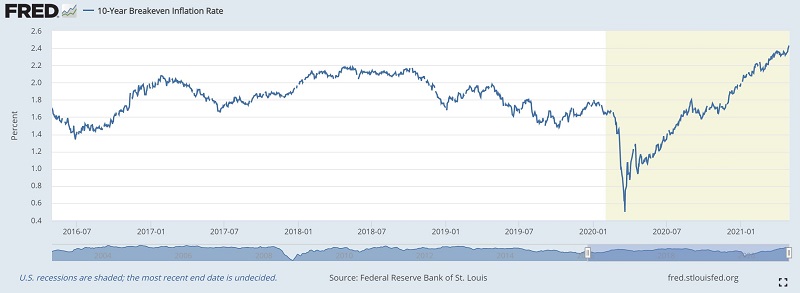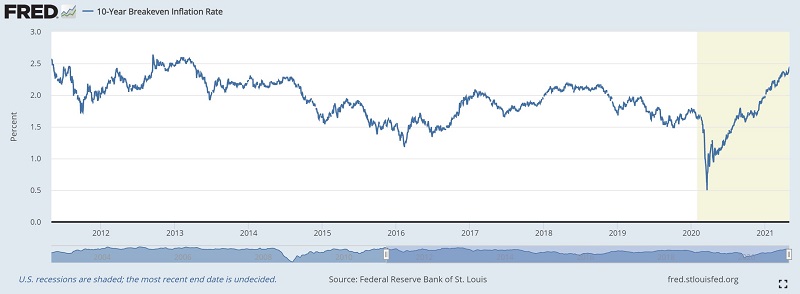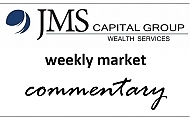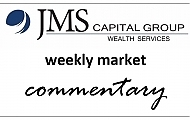By using our website, you agree to the use of cookies as described in our Cookie Policy
Blog
A Quick Inflation Update
Here’s the current 10-year breakeven inflation rate, which reflects market expectations of the average inflation rate over the next 10 years:

The trendline is discomfiting. But this chart only goes back 5 years. Perhaps a broader perspective would be helpful:

These two graphs illustrate the underlying tension we’re facing. Is inflation accelerating in a way that may make it difficult to rein in? Possibly. Is inflation merely renormalizing back to levels seen only a decade ago? Also possible.
The Fed of yesteryear would have taken the first chart as a justification to hike interest rates to forestall the possibility of inflation. This approach was stronger for inflation control, but risked curtailing economic and employment growth.
Today’s Fed is taking a different assessment of the balance of risks, as Chairman Jerome Powell stated last week that the recovery is “uneven and far from complete.” Moreover, as noted at https://www.cnbc.com/2021/04/28/fed-holds-interest-rates-near-zero-sees-faster-growth-and-higher-inflation.html, while Powell agreed that we could have a resurgence in inflation in 2021, he argued that such “one-time increases in prices are likely to only have transitory effects on inflation.”
So the Fed is maintaining interest rates near zero, and continuing its asset purchasing program unabated, for now. The Fed’s focus on concrete employment recovery rather than hypothetical inflation scenarios is understandable, but it likely means that 2021 will be nerve-racking for inflation watchers.
Only time will tell whether the expected rise in inflation in 2021 will prove to be a temporary blip, or a more ominous sign of price spiraling. We would expect inflation concerns to be an increasingly lively topic of conversation as the year unfolds. As for Fed policy, we would observe that the Fed has a few solutions to the inflation conundrum. First, as Powell noted, the Fed’s inflation target is an average of 2%, which means that inflation can run above 2% some of the time. Second, the Fed’s assessment that a 2021 inflation spike would be largely transitory may prove correct. Finally, if the Fed feels that inflation risks have mushroomed, the Fed can raise interest rates in response.
And if the Fed is indeed underestimating inflation risks, it is at least somewhat comforting to note that the Fed recently has been nimble enough to change direction when necessary. In late 2018 Jerome Powell stated the Fed would continue raising rates, but the Fed halted increases in early 2019 and began implementing rate cuts in mid 2019. Then in late 2019, Powell said the Fed was done cutting rates, only to slash rates to zero when the COVID crisis hit. So if the underlying data suggests the Fed was wrong with its inflation forecast, we have reason to hope that the Fed would then take action to curb inflation without inflicting undue economic pain.
###
JMS Capital Group Wealth Services LLC
417 Thorn Street, Suite 300 | Sewickley, PA | 15143 | 412‐415‐1177 | jmscapitalgroup.com
An SEC‐registered investment advisor.
This material is not intended as an offer or solicitation for the purchase or sale of any financial instrument or investment strategy. This material has been prepared for informational purposes only, and is not intended to be or interpreted as a recommendation. Any forecasts contained herein are for illustrative purposes only and are not to be relied upon as advice.
‹ Back











